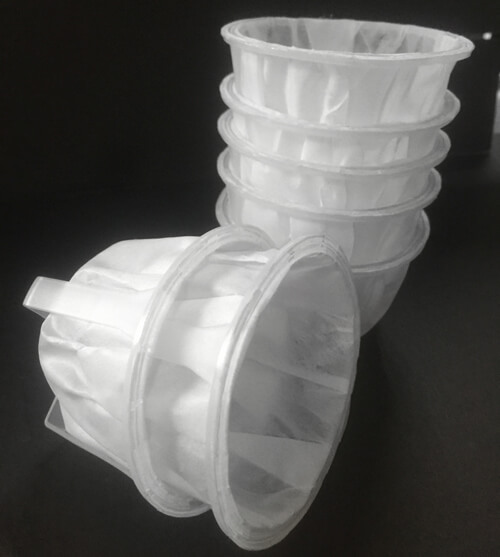What is the difference between bleached filter paper and natural filter paper?

Perhaps the most important factor that affects the result of a cup of coffee is the filter device selected for brewing the coffee. The filter cup and filter paper are a perfect partner.
In addition to the display of the coffee's own flavor, the filter paper that can affect the final flavor expression may have been often overlooked in the past, but after the introduction of some products that began to research on the filter paper, people began to pay more attention to the filter paper.
There are also filter papers that were all the rage before recreating different types of filter papers based on different baking degrees. I think these seemingly "big fuss" details should not be underestimated.
Because filter paper is even more important than the filter cup itself (its form and function usually have a greater impact on repeatability), it determines whether the coffee will have fine powder precipitation, whether it will be softer and silky, or whether it will have The mellow taste may have a positive impact brought by the participation of filter paper. Although there are many kinds of filter products on the market, the classic paper filter is still the most popular.
In the world of filter paper, there are two common choices: bleached and natural. I don't know if you have encountered such a problem, especially when you first started to use hand brewed coffee, you will struggle to buy the bleached version and restore the wood brown version.
So what is the difference between the two? So today, let’s discuss with you how these two filter papers are made and how they affect the overall flavor of your coffee.
Like all paper products, both filter papers are made from wood pulp, which is a fibrous material mixed with water and is the basis of most paper industries. Natural filter paper, also known as "unbleached". Without any bleach treatment, their color is brown, similar to the color of natural wood.
It may also be the purpose of market demand and the trend is that people still think that white will be brighter and cleaner, so it is necessary to bleach the paper. Common bleaching methods are chlorine bleaching and oxygen bleaching.
Since the production of natural filter paper requires less processing, it is generally considered to be more environmentally friendly. Traditional chlorine bleaching is the least environmentally friendly, because the chemicals it produces may be improperly treated. It is these concerns that have led to an alternative bleaching treatment method, which is oxidative bleaching.
Common oxygen bleaching is the use of acid bleaching, which is the function of bleaching items through oxidation reaction, which is safe and harmless to the human body. Although special equipment is required for processing, oxidatively bleached filter papers require less chemicals to achieve the unique whiteness, which makes them more environmentally friendly than chlorine bleach, although they still cannot reach the environmental protection level of natural non-bleached filter paper.
You can usually find information on how to use a bleach filter on the box. For example, some filter papers use oxygen bleaching. So the most discussion about bleaching or non-bleaching is the question of whether there will be a difference and influence on the flavor of the product.
In fact, this flavor effect is a relative concept. If filter paper will negatively affect the taste of coffee, it is natural filter paper without bleaching. If you do not rinse properly before brewing, natural filter paper will give your coffee a kind of woodiness. The smell of paperiness is generally unpleasant.
So when you rinse the natural filter paper beforehand, you can smell the pulp if you get close and smell it. The performance of bleached filter paper in this aspect will be relatively neutral, which is one of the reasons why many people choose bleached filter paper.
In the final analysis, which filter paper you choose to use depends on your preference. If you pay more attention to the flavor of hand brewed coffee, then bleached filter paper may be your first choice; if you want to reduce the impact on the environment and be more environmentally conscious, then natural filter paper will be more in line with your wishes.
In fact, from the perspective of environmental protection, hemp filter paper is also a good choice. The common hemp filter paper uses manila hemp fiber, and the price is the same as that of conventional wood pulp filter paper, so it can be regarded as a more respected alternative nowadays, as well as natural kenaf. The non-bleached filter paper also replaces the virgin paper made from traditional wood. It has a more natural feel and a greener and healthier coffee filter paper.
Sales Director: Mr.Hong
TEL: 0086-21-59156277
MOB: 0086-15216669995
QQ: 1587889833
Wechat: 15216669995
WhatsApp: +8615216669995
Skype: Joygoal.Machinery
Email: Hong@shjoygoal.com
http://www.shanghaipacking.com/
https://www.facebook.com/joygoal.machine/

